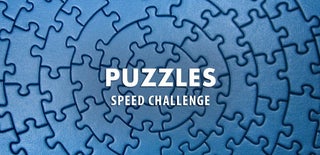Introduction: 3D Puzzle
For Christmas, Olivierbricole's shop made a 3D puzzle, inspired from a model I found on Pinterest, but I can't find again the source.
On a wooden basis are attached wooden rods with different lengths. disks with different hole patterns are inserted on the rods in a given sequence. When finished, the puzzle is a complete cylinder.
Better have a look to the pictures which shows the sequence to understand.
I first published this instructable in french on my blog. You can visit it, there are many other articles.
Step 1: Cut the Disks
I long hesitated on the number of rods, and I ended up with 6 around and 1 in the center. It is easy to trace with a compas, and the size is reasonable. I cut a first disk in thick plywood with the scroll saw and I used this first disk as a template for the next ones made out of thinner plywood. Everything went quite well until I made a knotch in the first disk (and the other one of course).
Step 2: Sand the Edges Together
I attached some disks together and sanded the edges on the drum sander to smooth the edges and get a quite circular shape. I repeated with the rest of the disks.
Step 3: Drill the Holes
I then drilled pilot holes in the basis, and carefully drilled the right pilot holes on the other disks.
this pilot hole allows to center the big drill for the rod. I drilled from one side till half of the thickness and drilled the rest from the other side, this allows to avoid splinters in the wood and both faces are clean.
I sanded the holes with the drum sander.
Step 4: Fix the Rods and Test
For the rods, I used a curtain wooden rod. The rods are cut with different lengths so that they are flush with the disk.
Rods and disks are colored with tinted alcool (I already explained how I made this stain in other instructables).
Rods are screwed on the basis from the bottom, starting with the center one and then the shorter to the taller. I used the disks as templates to fix the rods in the right place.
It works, but I had to enlarge the holes a little bit to make easier to insert the disks. I also used some wax to make the surfaces as sliding as possible.

Participated in the
Puzzles Speed Challenge













